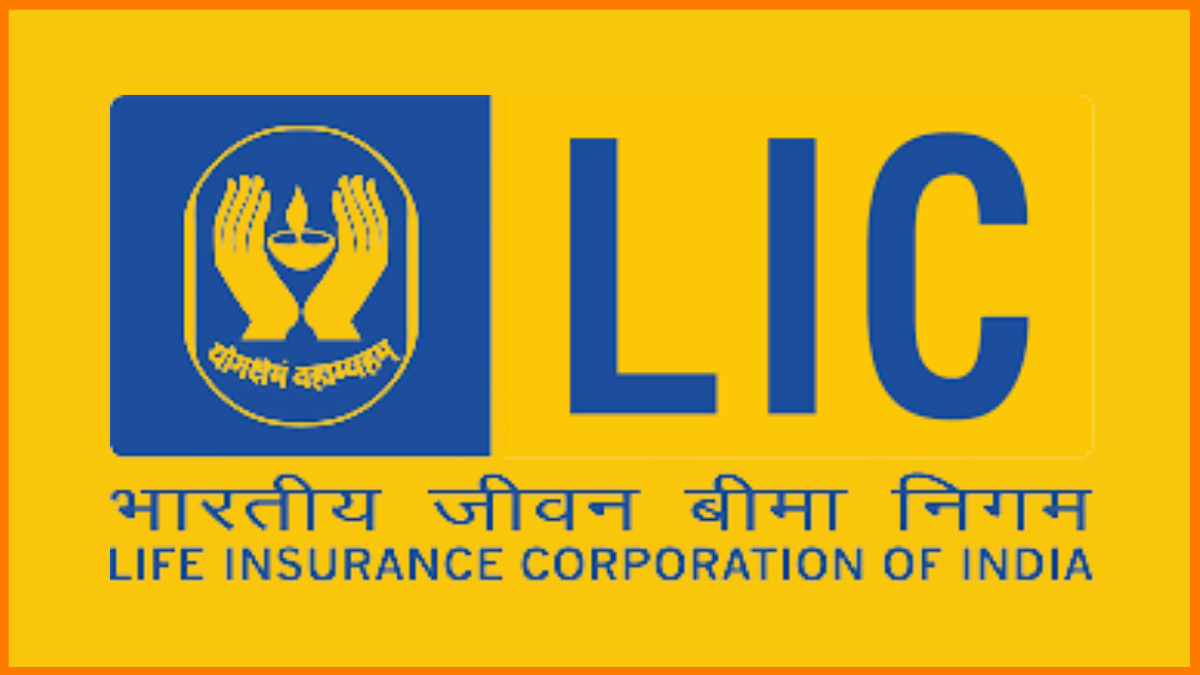The Government of India owns the Life Insurance Corporations of India (LIC), which is an insurance and investment business. The Life Insurance Corporation of India (LIC) was established on September 1, 1956, when the Parliament passed the Life Insurance of India Act, which nationalised the Indian insurance business. The state-owned LIC was formed by the merger of over 245 insurance companies and provident organisations. It both encourages and results in the institutionalisation or mobilisation of savings.
Since then in the field of life insurance, the LIC has near-monopoly, as the amount of life insurance business through postal insurance and state insurance is relatively much smaller. Life insurance is a very important form of long term contractual savings. The total volume of the insurance business has been growing in the country with the spread of knowledge and consciousness about insurance in the country.
However LIC can grow at a faster rate if the organizational and operational efficiency of LIC can be improved, new kinds of insurance covers are introduced, its services are extended to smaller lesser-known places and the general price level is kept stable. As of 2019, the Life Insurance Corporation of India had a total life fund of ₹28.3 trillion. The total value of sold policies in the year 2018-19 is ₹21.4 million. Life Insurance Corporation of India settled 26 million claims in 2018–19. It has 290 million policyholders.
insurance seekers against risk through the means of insurance contracts. The
contract is an agreement between the insurer and the insured in which the
insurer guarantees payment for an uncertain event against a premium paid by …

A brief about LIC Subsidiaries
LIC invests in various sectors such as cement, banks, chemicals and fertilizers, transmission and electricity, engineering, construction and infrastructure, electrical and electronics, healthcare, hotels, finance and investments, information technology, metals and mining, motor vehicles, oil and natural resources, retail, textiles, transportation and logistics.
Among those companies, LIC’s holding I term of value in 2012 was established to be the highest in ITC (₹27,326 crores), followed by RIL (₹21,659 crores), ONGC (₹17,764 crores), SBI (₹17,058 crores), L&T (₹16,800 crores), and ICICI Bank (₹10,006 crores). The share price drop in ITC on 18 July 2017 had caused LIC a major loss of around 7000 crores during the financial year.

The subsidiaries of LIC are:
LIC Pension Fund Limited
LIC Cards Service Limited
IDBI Bank Limited
IDBI Bank Limited Step Down Subsidiaries:
Where LIC also holds a 51% stake in IDBI Bank, making it the only insurer in India to own a bank, since regulations prohibit insurers from holding more than 15% stake in any company.

LIC Pension Fund Limited
LIC Pension Fund Limited is India’s first pension fund. It was set up by Life Insurance Corporation (LIC) in November 2007. LIC is one of India three public sector pension fund managers and has a one-third share in all investments made through Central and State Government NPS. It is also open to the private sector as a fund manager. LIC Pension Fund is the first Pension Fund Company in India to be incorporated and to receive commencement of business certificate.
The government of India introduced the New Pension System (NPS), with effect from 2004. Pension Fund Regulatory And Development Authority (PFRDA) through a process of competitive bidding, has appointed Life Insurance Corporation (LIC), State bank of India (SBI), UTI Asset management company (UTI –AMC) and as The Pension Fund under the NPS. “NPS-Lite Model” is designed to ensure ultra-low administrative and transactional costs, so as to make such small investments viable.
National Pension System NPS Lite makes pensions possible for small investors. It is an initiative of the Pension Fund Regulatory and Development Authority (PFRDA), the apex body established by the Government of India to regulate and develop the pension sector in India. NPS extends help to the weaker and economically disadvantaged sections of the society with their limited investment potential. This is why PFRDA has launched NPS Lite to specifically target the marginal investors and promote small savings during their productive life. It also aims at building up a corpus sufficient enough to buy an annuity for their old age.
people interested in the franchise industry. There has been a constant rise in
insurance companies and their services. Insurance franchises offer opportunities
for small business owners with previous sales or finance experien…

LIC Cards Service Limited
LIC Cards services limited came into existence in 2008 as a 100% subsidiary of LIC to bring out its own credit cards in the market. LIC offers four types of credit cards and each of these cards come with some common features and some distinct features that make them unique. LIC credit cards are best suited for you if you regularly pay a large LIC premium. LIC cards are uncapped, while other cards have a cap cashback and reward points that can be earned on premium payments.

The types of LIC cards are:
- LIC Gold Credit Cards (for regular users)
- LIC Platinum Credit Cards (for shopping and rewards)
- LIC Titanium Credit Cards ( for travel and hotel booking)
- LIC Signature Credit Card (for premium services)
| Fee/Charge | Amount/rate |
|---|---|
| Finance Charges on Revolving Credit and Cash Advance | 3.25% p.m. (46.78% annual) |
| Free Credit Period | Free Credit Period Up to 50 days |
| Cash Withdrawal Fee | 2.5% of the amount withdrawn (min. Rs. 500) |
| Cash Payment Fee | Rs. 100 |
| Over Limit Fee | 3% of the amount (min. Rs. 500) |
| Foreign Currency Mark-up Fee | 3.5% of the transaction amount |
There are certain criteria that the financial institution looks into before accepting your credit card application. Your credit score, age, monthly income, location etc. are some of the parameters that you should keep in mind before you apply for a credit card. To apply for a LIC credit card, you should be above 18 years and should either be a LIC agent or a LIC policyholder. The document required to apply for a LIC credit card are:
- Proof of Identity – PAN Card, Aadhaar card, Driver’s License, Passport, Voter’s ID, Overseas Citizen of India Card, Person of Indian Origin Card, Job card issued by NREGA, Letters issued by the UIDAI.
- Proof of Address – Aadhaar card, Driver’s License, Passport, Utility Bill not more than 3 month’s old, Ration Card, Property Registration Document, Person of Indian Origin Card, Bank Account Statement.
- Proof of Income – Latest one or 2 salary slips (not more than 3 months old), Latest Form 16, Last 3 months’ bank statement.
life insurance, the way these instruments are sold, and several other points.
India had about 328 million life insurance policies in 2019, so it’s a pretty
huge business that one needs to understand and be aware of. Seve…

IDBI Bank Limited
IDBI Bank Ltd., as a full-service universal bank provides a wide gamut of financial products and services encompassing deposits, loans payment services and investment solutions. Understanding today’s fast-paced and digital world they offer an innovative range of digital services that complement the pan India network of branches and ATMs. The bank also has 24×7 customer care facilities to help its customers reach out. IDBI Bank Ltd is operating as a full-service universal bank that serves customers from all segments.
As a universal bank, IDBI Bank Ltd. touches the lives of millions of Indians through a wide variety of banking products and services. The Bank also has an established presence in associated financial sector businesses including capital market, investment banking and mutual fund business. IDBI’s very business philosophy is to provide relevant financial solutions, ensure maximum customer convenience through easy access to branches and ATMs as well as digital offerings and excellence in customer service.

The vision is to be the most preferred and trusted bank enhancing value for all stakeholders defining and shaping our day-to-day business, helping us to build long-lasting relationships. IDBI Bank Limited has been categorized as a ‘Private Sector Bank’ for regulatory purposes by the Reserve Bank Of India with effect from January 21, 2019, consequent upon Life Insurance Corporation Of India acquiring 51% of the total paid-up equity share capital of the bank. To cater to its ever-expanding needs, IDBI Bank has formed subsidiaries and joint ventures across diverse areas of the Banking and Financial System.
Some of its subsidiaries are:
IDBI Capital Markets and Securities Limited (ICMS)
Its businesses include Merchant Banking, Stock Broking, Distribution of Financial Products, Corporate Advisory Services, Debt Arranging and undertaking, Portfolio management of pension and Research Services.
IDBI Intech Limited (IIL)
The major business activities of the company are Information technology services, information security practices, national contact centre and outbound sales team.
IDBI Asset Management Limited (IAML)
IAML is the investment manager of schemes launched by IDBI Mutual Fund. The Fund offers a bouquet of products inequity and risk profiles of investors.
IDBI Trusteeship Services Ltd (ITSL)
The company operations are acting as trustees to securitization transactions, acting as Bond/Debenture trustee, Security trusteeship assignments, Share pledge Trustee, Venture Capital Fund, Safe Keeping and other trusteeship services.
IDBI Federal Life Insurance Company Limited (IDBI Federal)
The Company’s life insurance business comprises individual life and pension and group life, including non-participating, health and linked segments.
FAQ
In which sectors LIC invest?
LIC invests in various different sectors such as cement, banks, chemicals and fertilizers, transmission and electricity, engineering, construction and infrastructure, electrical and electronics, healthcare, hotels, finance and investments, information technology, metals and mining, motor vehicles, oil and natural resources, retail, textiles, transportation and logistics.
What is LIC Pension fund limited?
LIC Pension Fund Limited is India’s first pension fund. It was set up by Life Insurance Corporation (LIC) in November 2007. LIC is one of India three public sector pension fund managers and has a one-third share in all investments made through Central and State Government NPS. It is also open to the private sector as a fund manager. LIC Pension Fund is the first Pension Fund Company in India to be incorporated and to receive commencement of business certificate.
How many types of Cards does LIC provide?
LIC Gold Credit Cards (for regular users)
LIC Platinum Credit Cards (for shopping and rewards)
LIC Titanium Credit Cards ( for travel and hotel booking)
LIC Signature Credit Card (for premium services)










